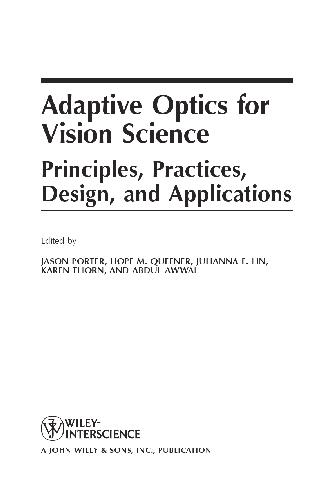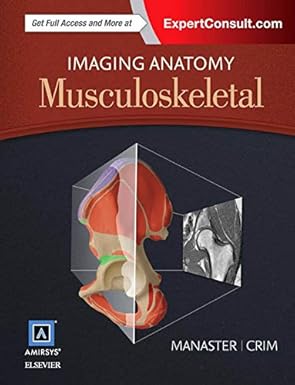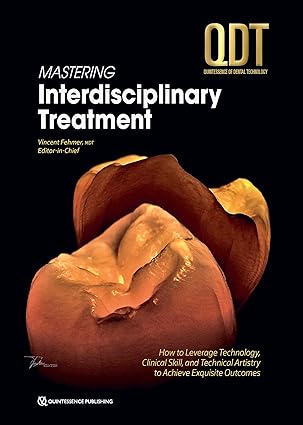دانلود کتاب Adaptive Optics for Vision Science Principles Practices Design and Applications - Original PDF
Author:
Jason Porter, Hope Queener, Julianna Lin, Karen Thorn, Abdul A. S. Awwal
0 (0)
توضیحات کتاب :
The high transverse resolution of retinal imaging systems equipped with adaptive optics provides a unique opportunity to record these eye move- ments with very high accuracy. Putnam et al. showed that it is possible to record the retinal location of a fixation target on discrete trials with an error at least 5 times smaller than the diameter of the smallest foveal cones [63]. We used this capability to measure the standard deviation of fixation positions FIGURE 1.7 Images of the cone mosaics of 10 subjects with normal color vision, obtained with the combined methods of adaptive optics imaging and retinal densi- tometry. The images are false colored so that blue, green, and red are used to repre- sent the S, M, and L cones, respectively. (The true colors of these cones are yellow, purple, and bluish-purple). The mosaics illustrate the enormous variability in L/M cone ratio. The L/M cone ratios are (A) 0.37, (B) 1.11, (C) 1.14, (D) 1.24, (E) 1.77, (F) 1.88, (G) 2.32, (H) 2.36, (I) 2.46, (J) 3.67, (K) 3.90, and (L) 16.54. The proportion of S cones is relatively constant across eyes, ranging from 3.9 to 6.6% of the total population. Images were taken either 1° or 1.25° from the foveal center. For two of the 10 subjects, two different retinal locations are shown. Panels (D) and (E) show images from nasal and temporal retinas, respectively, for one subject; (J) and (K) show images from nasal and temporal retinas for another subject. Images (C), (J), and (K) are from Roorda and Williams [52]. All other images were made by Heidi Hofer. (See insert for a color representation of this figure.) (From Williams and Hofer [57]. Reprinted with permission from The MIT Press.) across discrete fixation trials, obtaining values that ranged from 2.1 to 6.3 arcmin, with an average of 3.4 arcmin, in agreement with previous studies [63, 64]. Interestingly, the mean fixation location on the retina was displaced from the location of highest foveal cone density by an average of about 10 arcmin (as shown in Fig. 1.8), indicating that cone density alone does not drive the location on the retina selected for fixation. This method may have interesting future applications in studies that require the submicron registra- tion of stimuli with respect to the retina or delivering light to retinal features as small as single cells. Whereas the method developed by our group can only record eye position on discrete trials, Scott Stevenson and Austin Roorda have shown that it is possible to extract continuous eye movement records from video-rate images obtained with an adaptive optics scanning laser ophthalmoscope (AOSLO) [66]. Eye movements cause local warping of the image within single video frames as well as translation between frames. The warping and translation information in the images can be used to recover a record of the eye move- ments that is probably as accurate as any method yet devised. This is illus- trated in Figure 1.9, which compares the eye movement record from the AOSLO with that from a Dual Purkinje Eye Tracker. The noise in the AOSLO trace is on the order of a few arc seconds compared to about a minute of arc for the Dual Purkinje Eye Tracker. Note also the greatly reduced overshoot following a saccade in the AOSLO trace. These overshoots are thought to be partly artifacts caused by lens wobble following the saccade and do not reflect the true position of the retinal image. The AOSLO is not susceptible to this artifact because it tracks the retinal position directly rather than relying on reflections from the anterior optics.
سرچ در وردکت | سرچ در گودریدز | سرچ در اب بوکز | سرچ در آمازون | سرچ در گوگل بوک
1,211 بازدید 0 خرید










